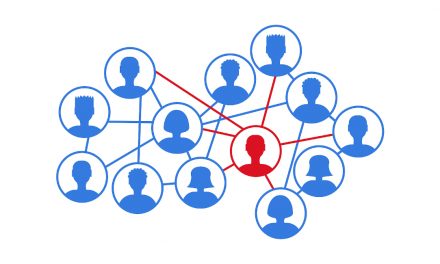By Jack Cumming
On January 5, 1914, Henry Ford jumped the pay of his workers to $5.00 a day, roughly doubling what they were paid previously. But that pay hike came at a price. In order to get the benefit of a higher wage, the workers had to agree to productivity concessions that made work less fulfilling but more rewarding. The purchasing power of $5.00 a day in 1914, assuming an 8-hour day, equates roughly to $16.25 an hour today, so not much has changed for workers’ pay since Ford’s initiative.
Henry Ford made that doubling of wages work. What can we learn from Ford’s example? He was anything but altruistic. He was bold and his impact globally was dramatic. The year before he had reduced automobile assembly time from 12.5 hours to just 1.5 hours, but the monotony of the work drove turnover sky high. The wage jump allowed workers to buy the cars they made. Ford met the demand by going to three shifts a day, continuous production, from just two shifts a day. Turnover dropped and auto work became prestigious.
What did Ford know then that that might help with today’s workforce challenge in senior living? Ford must have known that “doubling” would resonate with the press and get his business a positive buzz. His public relations ploy succeeded dramatically. The entire auto industry benefitted. The equivalent for senior living would be paying workers enough so that they could afford to retire to the communities where they worked.
Senior Living
With the likely enactment soon of a $15 minimum wage, the equivalent of what Ford did in 1914 would be for a senior living operator to announce a $30 minimum enterprise wage today. Think of what that could mean. As with Ford’s operation, the wage hike can justify offsetting productivity changes. Productivity gains of that magnitude require a large technology investment and organizational efficiencies.
To justify the pay jump, mission performance would have to be achieved, even improved, with fewer employees. As a practical matter, legislation and cultural change would be needed to allow staffing related to patient outcomes. By motivating and equipping workers to demonstrate better care and outcomes through innovation, operators should be able to earn the chance to elevate their services for the betterment of the lives of those they serve and employ.
What might give that tradeoff of better care with less staff? The two-person transfer is a good starting point. Technology already exists that can make that a one-person process. A little technological imagination might enable a frail person to self-transfer. That would preserve their dignity and free up staff. Mandated staffing ratios remove the incentive for such life-improving innovations. Other technologies, now common in Japan, can alleviate some of the more onerous care challenges, including toileting and bathing.
Bold changes, piloted initially and adopted if they prove successful, result in staff redundancies. Some workers are likely to welcome reduced hours with higher hourly pay. Other redundancies require generous severance and transition programs. Knowing that those who are displaced are likely to have freer, more rewarding lives afterward makes it much more palatable for executives to act decisively. Constructive change will take automation and sound judgment to accomplish.
Administrative automation captures every transaction and, ideally, does so without being intrusive. Integrating a strong managerial accounting system with operating decision making (artificial intelligence) brings the thinking of pioneers like Frederick Winslow Taylor and W. Edwards Deming to a new height. It interleaves with the emerging field of Improvement Science.
Ripe Opportunities
If this seems fanciful and impractical, then just reflect that what Amazon has become would have seemed fanciful and impractical in 1990, just thirty years ago. Those three short decades have made a big change in American commerce. To provoke deep thinking, here is a handful of illustrative possibilities.
- Organizational Economies: The proliferation of connectivity technologies allows a flatter, less layered, more empowering, more integrated organization. Those economies are easier to achieve with startup organizations than with culturally traditional enterprises.
- Empowerment Organization: The hobgoblin of hierarchical organizations is the inherent repression of new thinking which can progressively render an enterprise anachronistic. This is easily explained. Career advancement requires dodging blame. Ideas for process improvement often originate with a frontline worker who asks permission to implement it. If the worker’s boss says, “okay,” then the boss risks blame if the improvement goes awry. The same is true of the boss’s boss, who must also say, “okay.” Consider five or more levels of hierarchy and it’s no wonder that creative workers are praised as their ideas languish. Innovation takes courage. A flatter organization reduces these multi-layered career insecurities.
- Data Capture and Management: Data is the key to achieve the economies from an empowerment organization. Mission-critical interactions, e.g. response times in skilled nursing, can be continuously tracked and organized to alert the C-Suite to what needs intervention and what individual initiatives might be beneficially replicated more widely.
- Thinning the Organization: Hierarchies tend to spawn excessive layers. It’s not uncommon for large enterprises to have 20 to 30 ascending layers of control. How many pay grades does your employer have? That creates a large opportunity for economizing. Moreover, sometimes well-intentioned, but non-productive cohorts evolve. All elements of a business should be regularly scrutinized to be sure that they are either essential to revenues or they contribute to better margins. All business expenses are an investment in revenues and the bottom line.
- Technology Everywhere: I don’t know of any young person who doesn’t live with a smartphone at their fingertips providing continuous connectivity and performance feedback, e.g fitness data. They respect enterprises that align with the new culture. Digitalization not only saves money and improves service, but it enables a feedback-loop culture of continuous improvement.
- Gig/Freelance Economy: On-demand services benefit both businesses and employees by providing intrinsic adaptability and flexibility. This is a challenge when workers on hand are indispensable as in a care setting. That’s not a new challenge. No assembly line can function if one station on the line is vacant. There are well-established solutions. The biggest risk to giving workers and employers the benefits of flexibility is the evolving political culture in which work conditions are legislated without considering business responsibilities toward customers. How this will evolve remains to be seen.
In our democratic consciousness as Americans, we root for the underdog. We love stories of people like Andrew Carnegie who came to our shores with nothing and became a person of great wealth and notable philanthropy. We call these Horatio Alger stories after a series of inspiring books about young people who overcame obstacles to succeed. Henry Ford bought into this by elevating his workers to become consumers. That concept might still work today.
Click here to read comments and join the conversation about this article.








